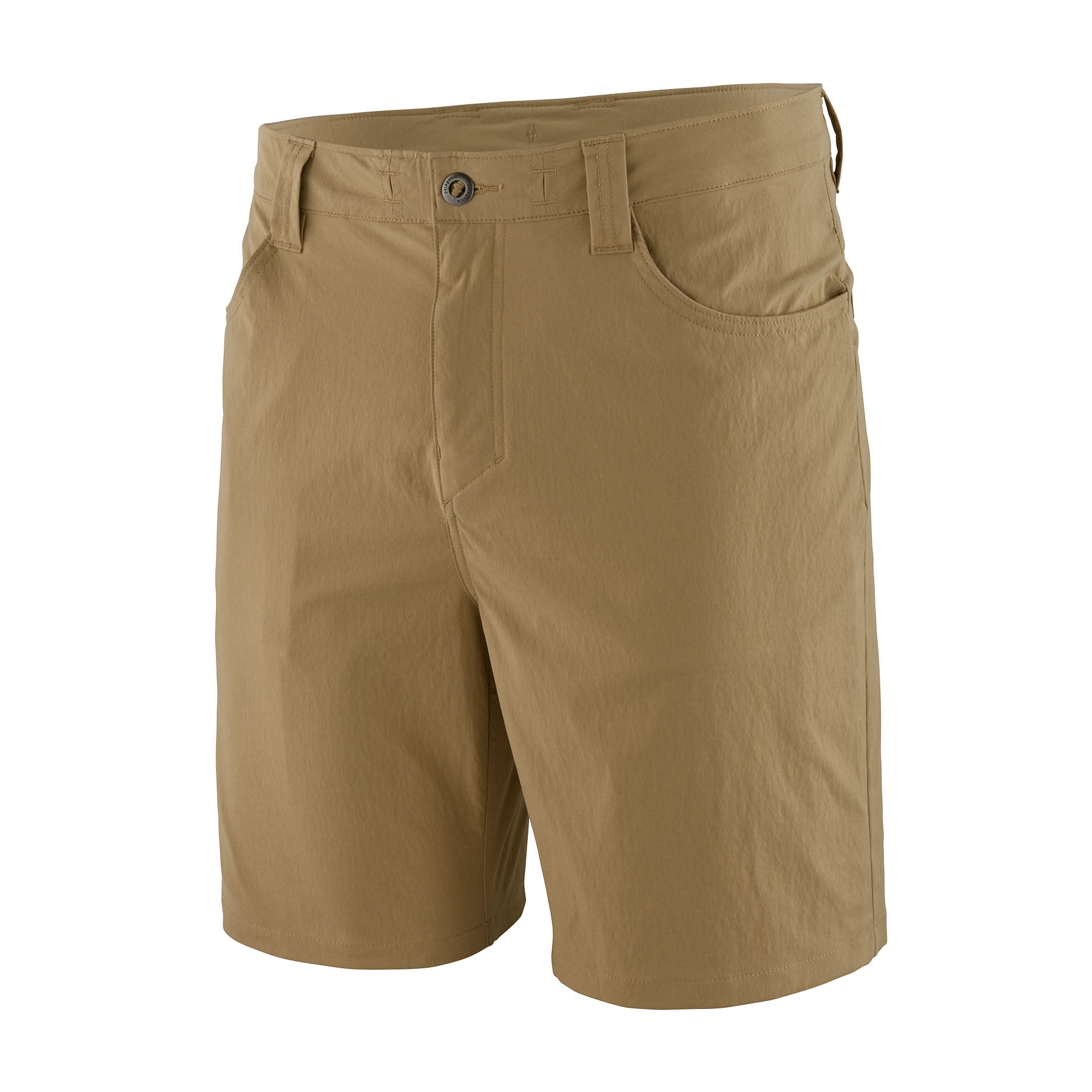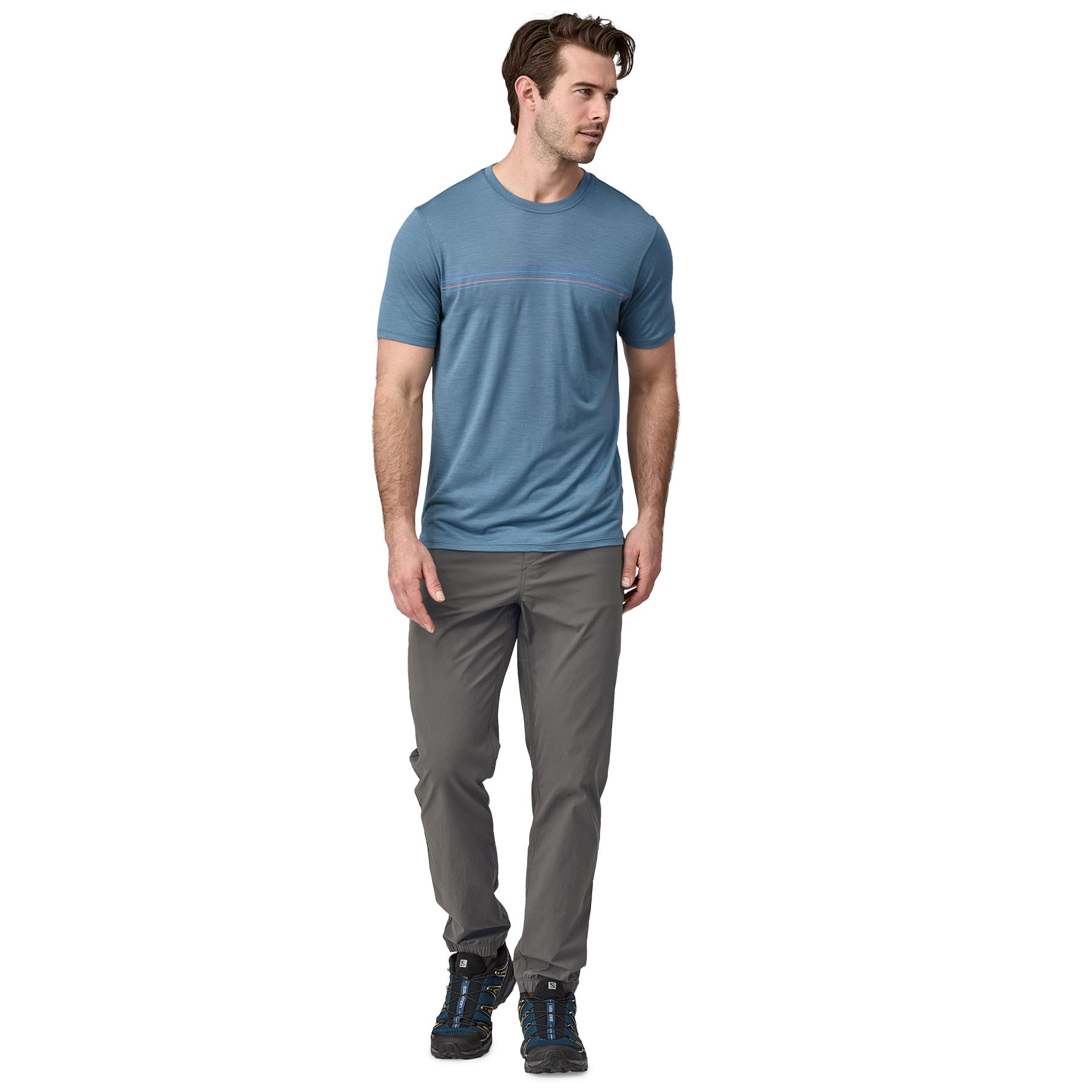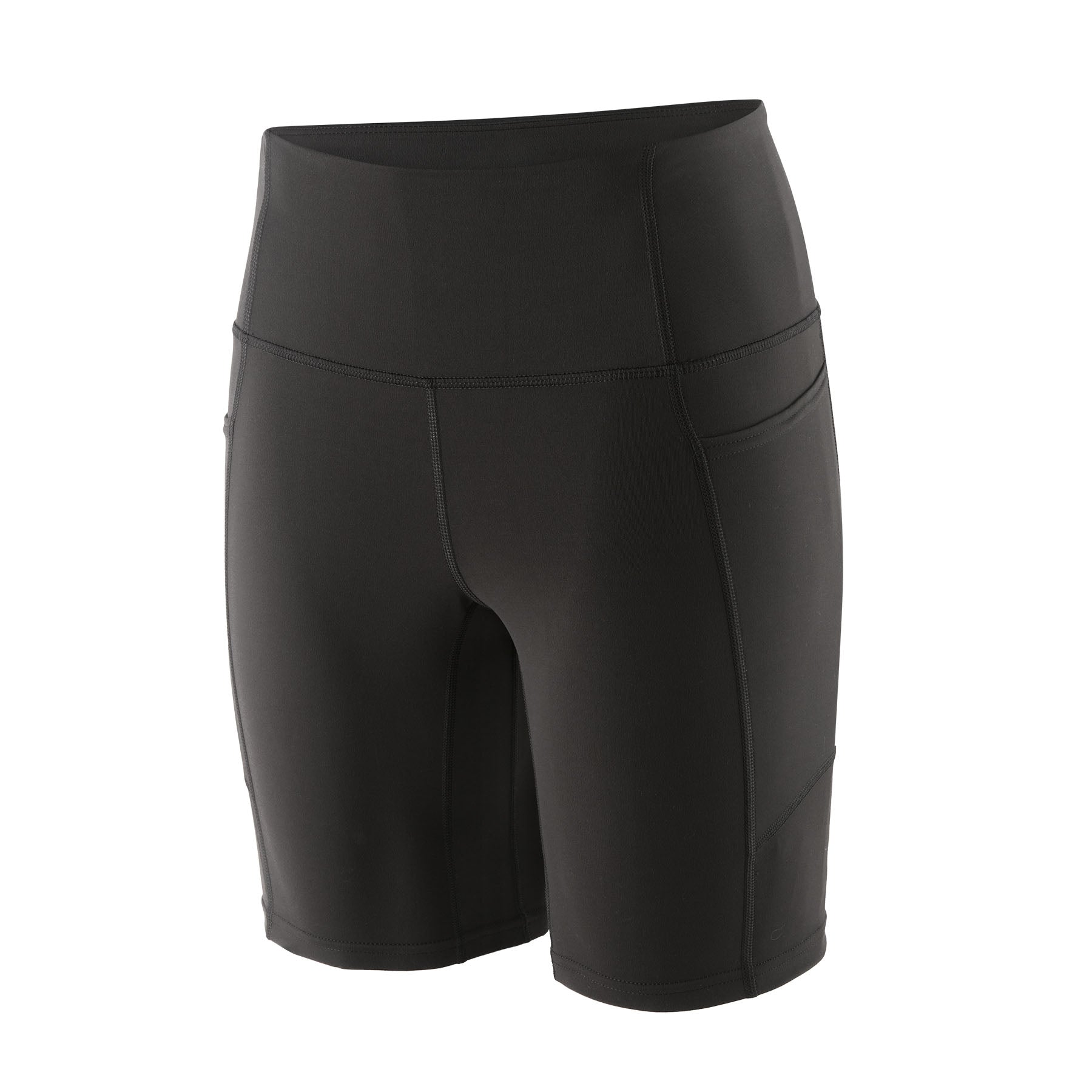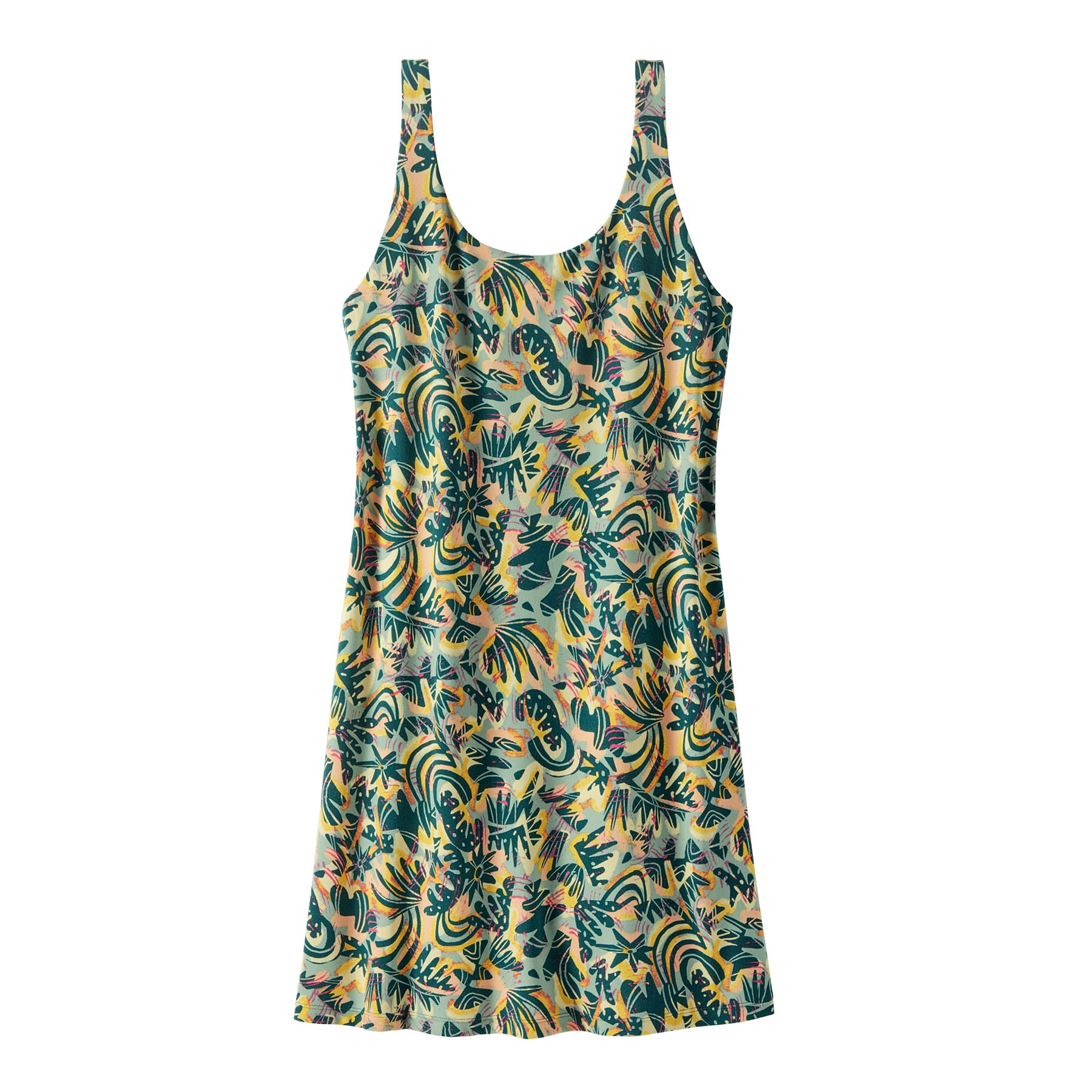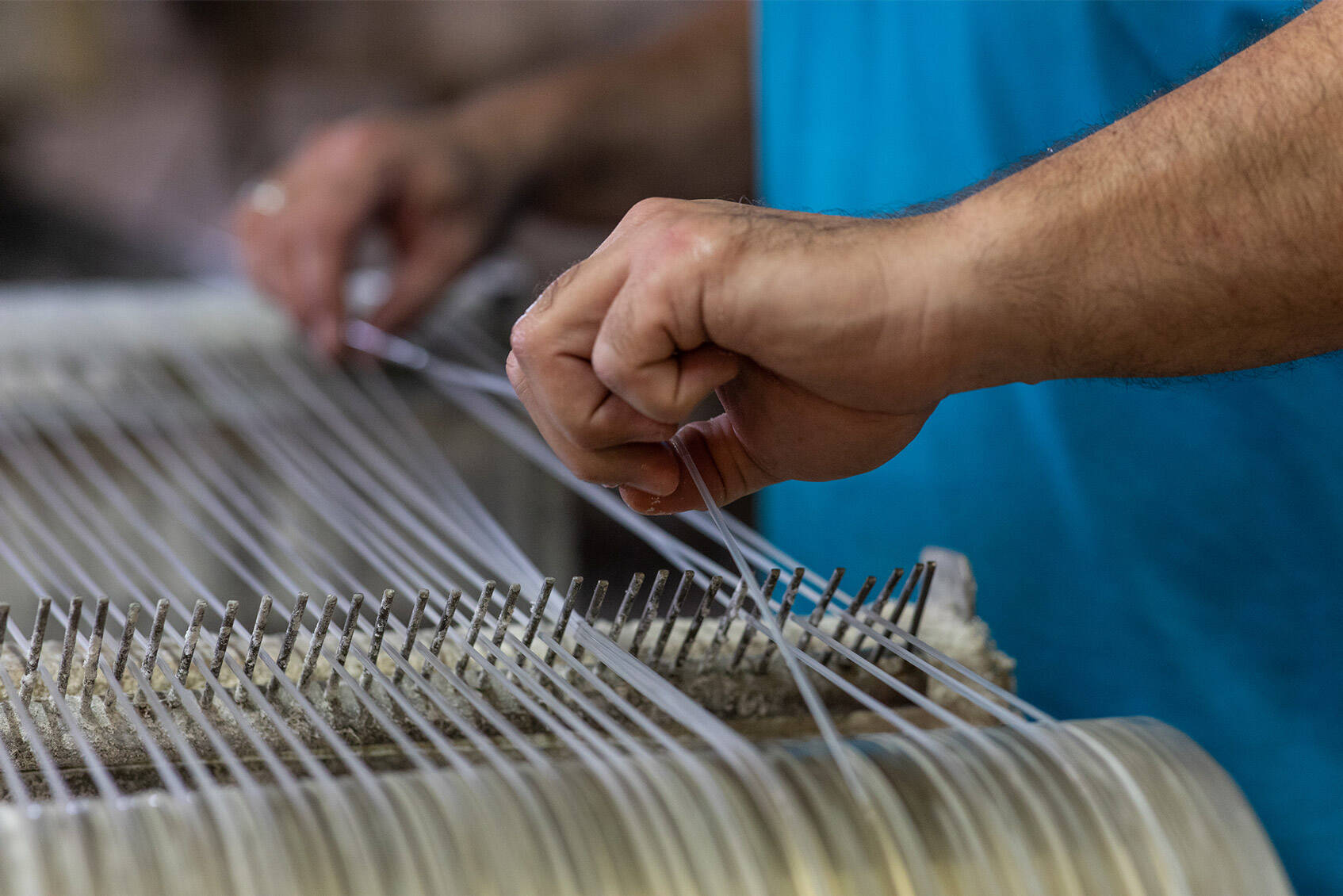Nylon
Why?
When Patagonia needs a lightweight, quick-drying fabric that can perform, they look to nylon, one of the strongest plastics they use to build our products. But like most plastics derived from petroleum, manufacturing nylon comes with costly environmental impacts that pollute the land, water and air.
Incorporating as much recycled nylon as they can decreases their dependence on virgin petroleum as a raw material source, helps divert discarded material and reduces greenhouse gas emissions from manufacturing. Using recycled nylon also promotes new recycling streams for nylon products that are no longer functional.
Where We Are
We still use a great deal of nylon, but we’ve switched to recycled sources for most of it: In our Spring 2024 line, only 2% of our fabric usage by weight includes virgin nylon. To meet our goal of moving completely from using virgin to recycled content, we need recycled nylon to continue making some of our favorite technical jackets and garments—and to maintain our performance standards.
One step in that journey is our use of Aquafil, a nylon yarn made from a 50/50 blend of postconsumer and pre-consumer nylon waste. The postconsumer materials come from products like fishing nets and discarded carpeting that have been bought, used in the world and then trashed. Pre-consumer waste material includes items like industrial plastic that would have otherwise been downcycled, downgraded or sent to a landfill. To create this fiber, our partner ECONYL utilizes its Regeneration System to bring the nylon waste back to its original chemical state, so the recycled yarn has the same characteristics as standard nylon produced from virgin raw material.
Most mechanically recycled materials are melted at high temperatures; this process destroys contaminants and transforms the material into a reusable form. However, nylon melts at a much lower temperature, leaving contaminants behind. As a result, it must be thoroughly cleaned before being recycled. Good sources of clean postconsumer nylon are difficult to find, but we are working closely with recycling partners to ensure the recycled nylon we use is pure and still rooted in performance.
For the Spring 2024 season, 90% of the nylon fabric we used to make clothing and gear is recycled nylon. Our use of recycled nylon fabrics this season reduced CO₂ emissions by more than 6.6 million pounds compared to virgin nylon, based on the Higg Materials Sustainability Index, version 3.6.
What’s Next
Our goal is to cut ties with virgin petroleum-based fabrics and materials by 2025. To get there, we’re using more postconsumer recycled nylon in our gear, and we’re also exploring other options to replace nylon entirely, such as materials made from plant-based alternatives, that will help curb the CO₂ emissions associated with material creation.
90%
The percentage of recycled nylon Patagonia used in their nylon-based fabrics for Spring 2025.















































